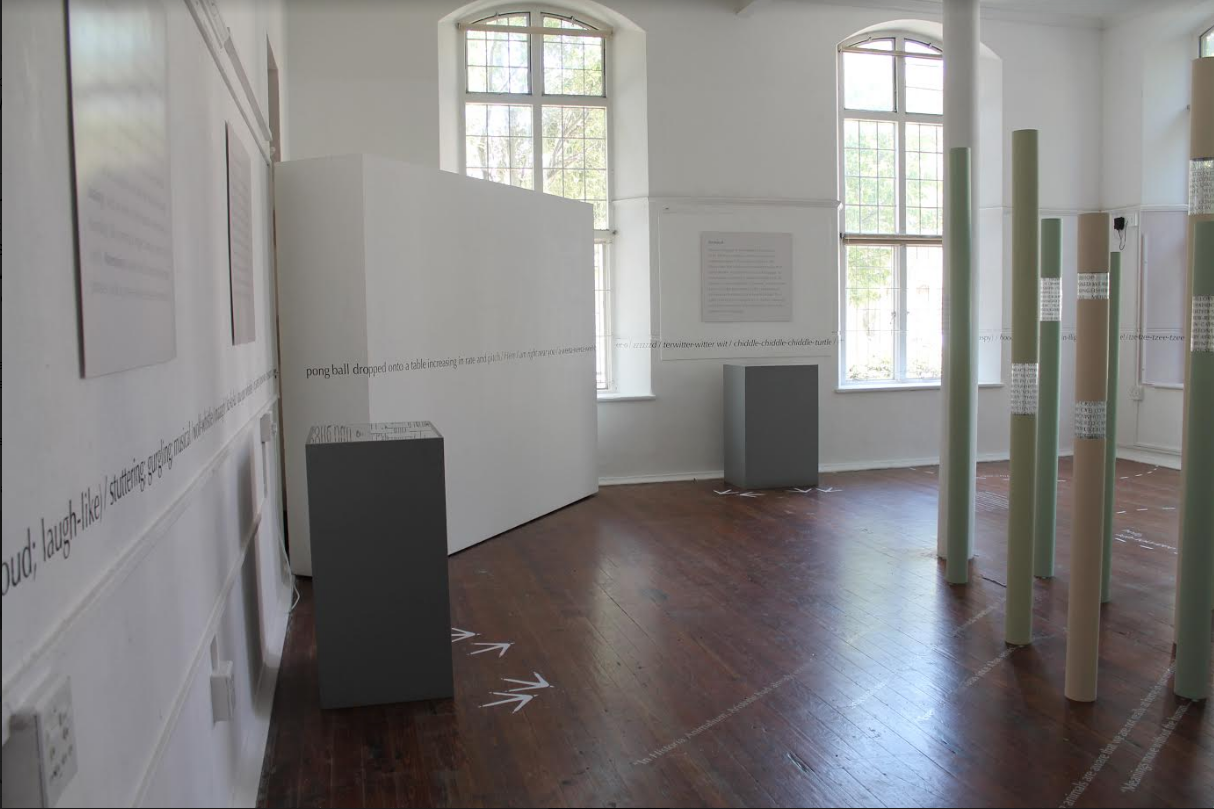As part of their final year projects, for the Honours in Curatorship programme, many of the students chose to curate an exhibition to go along with their research. These exhibitions all centred around an object they had done a study on. Below are some of the exhibitions curated by members of the class including: Georgia Stonehouse who chose a workbook of her grandfather's poetry, Amogelang Maledu who chose an Isigubu drum, San-Mari van der Merwe who looked at a human heart, Luvuyo Equiano Nyawose who took the gay flag as their starting point and Melissa Waters who researched birds' eggs.
Ramblings:
Three Narratives of a Workbook
This exhibition is centred around a singular object: my grandfather’s workbook of poetry. This workbook was once a secret object and a private companion. Now however, it has been opened to the gaze and wandering minds of others. It is ultimately an object which cannot carry a singular meaning as it contains plenitudes. This exhibition materializes this idea in the form of three encountered ‘readings’ of the object. These readings are informed by different perspectives: my grandfather’s, my own as granddaughter and curator, and the point of view of the workbook itself.
Each space contains its own narrative of the object. The viewer is meant to ramble throughout and between these spaces. The stairwell investigates the object as it functioned in my grandfather’s life as the gatekeeper of his memory. It questions the capacity personal objects have to tell us about departed humans, as well as the interactions and tensions between autobiography and fiction. The smaller room is curated in a way that allows insight into the body and mind of the workbook. On display are its interiority and subjectivity, as here it is not just a passive object. And finally, this room frames the workbook within my own questions of it and places it within theory and practice that is relevant towards object and curatorial study: the archive and memory. Whilst these three narratives differ, they also coexist within the object itself much like how one’s memory of a singular person, like a grandfather, can come to be multifaceted too.
Curated by Georgia Stonehouse
Below images by the curator:
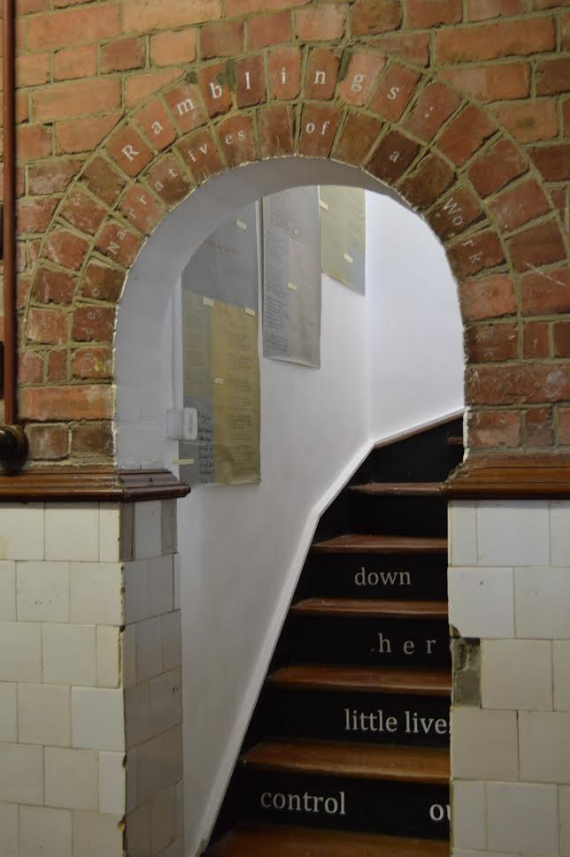
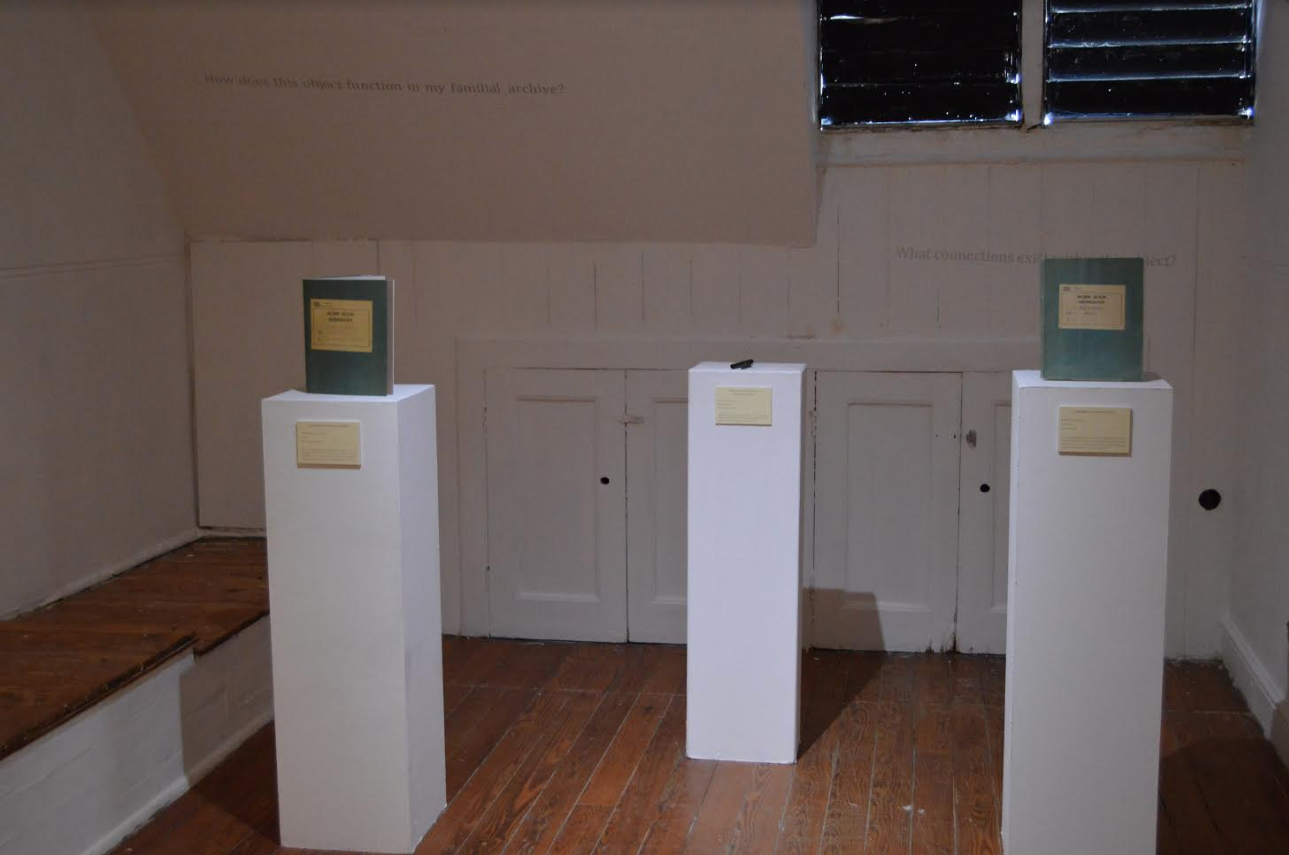
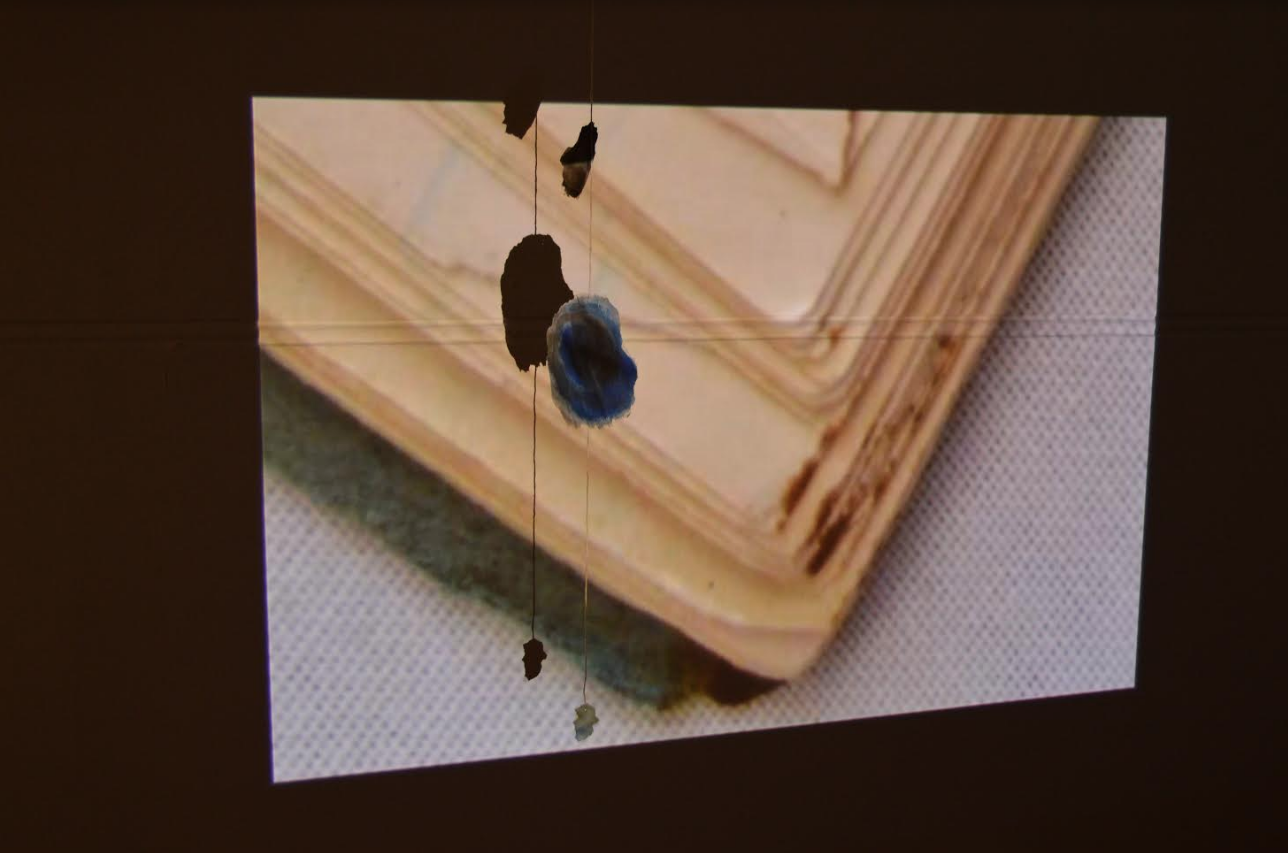
Isigubu through Gqom:
the sound of defiance and Black joy
This curation weaves Zulu music’s interconnectedness of the past and present. Here, the politics of silence and sound meet through the reification of the Isigubu – collected by ethnomusicologist Percival Kirby – alleged to have been played during the Bambatha rebellion.
The constellation proposes the cultural significance of Isigubu as it is typified in the (un)intentional genealogy of Gqom. The drum’s history of colonial resistance is presently contextualised through the lens of historicising Gqom’s objective of Black joy as a kind of freedom. Black joy as defiance against the stymies of township life.
Through engaging with Kirby’s archive, this curation subverts the Isigubu’s colonial silenced gaze by animating the loaned object through the percussive heavy and broken-beat sound of Gqom as a speculative resonance of animating the musical instrument’s contemporary social life. This constellation – through the framework of (re)imagination – proposes how curatorial practices can recontextualise colonially collected archives that have been deliberately silenced and their histories distorted.
Curated by Amogelang Maledu
Below images by Ramaanda Mutshekwa:
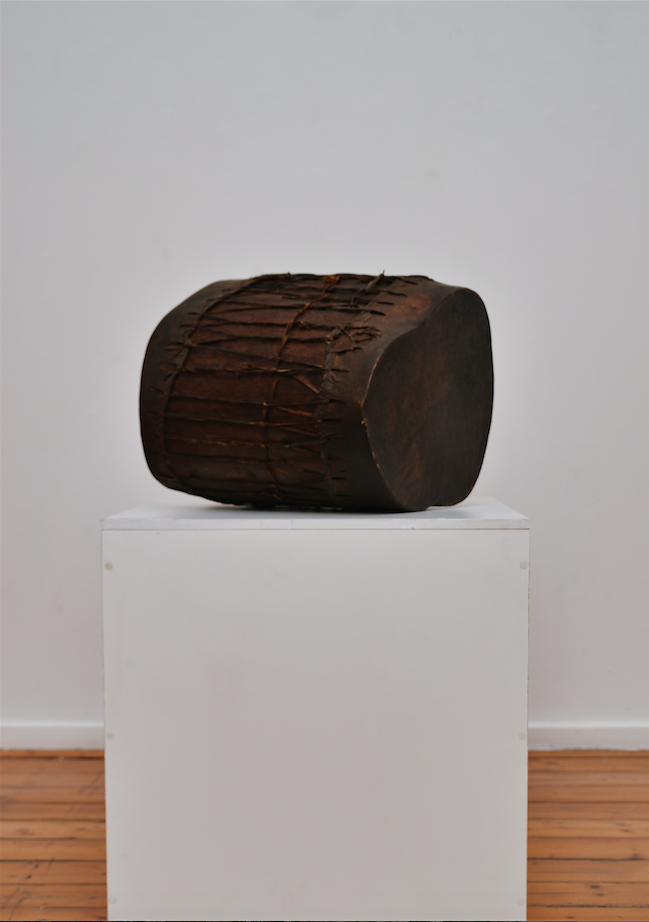

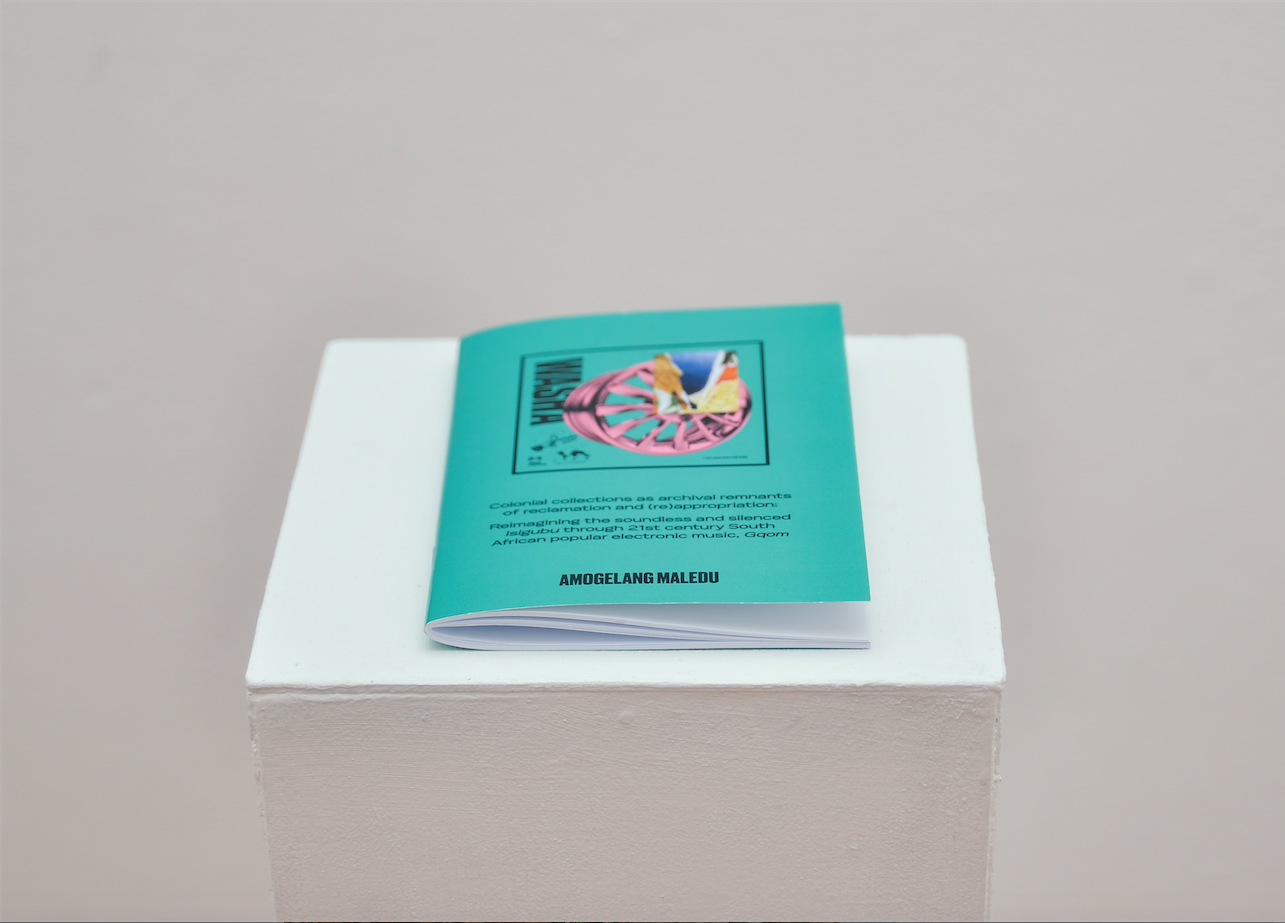
Baby,
You’re a Haunted House
The human heart. An organ, a muscle. Located a little to the left in our chests. The heart is not only biologically vital but is an object of cultural significance. The Baby, You’re a Haunted House exhibition wishes to encapsulate the versatility of the heart by showcasing only a few of many aspects of what the heart can be.
Ultimately divided into sections: death, and life. The biological body in the midst of its demise; the very human emotions that so often manifest in our chests, and how these emotions affect our perception of things we are presented with.
Curated by San-Mari van der Merwe
Below images by the curator:
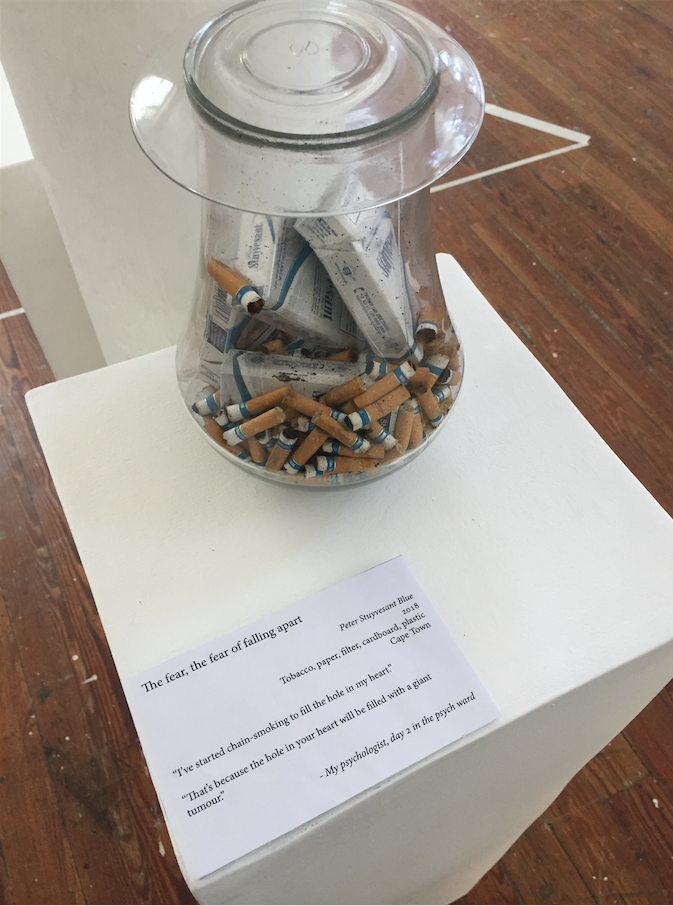
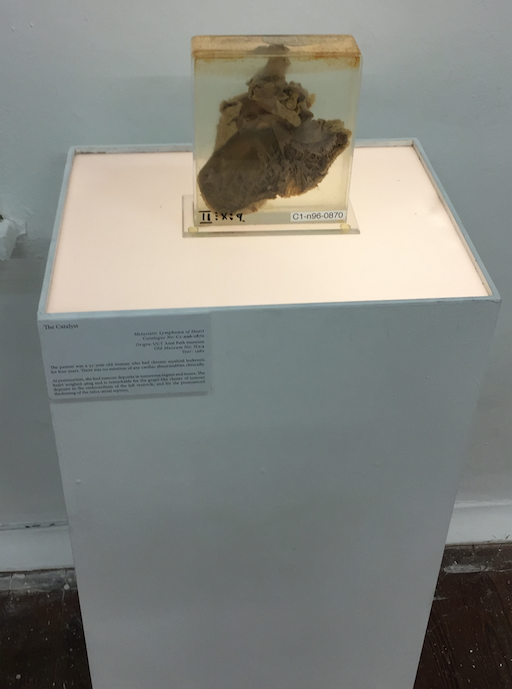

a conversation
noun
/kÉnvÉËseɪÊ(É)n/
an informal interaction between two or more people in which stories and ideas are exchanged. conversation can provide a window into another’s insight, perspective and mind. furthermore, it can overlap or be in synchronicity. in large groups, a conversation, can be incoherent or can be in chorus.
the exhibition, a conversation makes use of the gay flag of south africa as a point of reference to present and engage embodied works which speak to lived experiences rooted in biography and elements which shape queer and trans identities. it is a visual conversation and affirmation of emerging contemporary voices.
artists in conversation:
yonela makoba, mmakhotso lamola, boni mnisi,
matshidiso skosana, quaid heneke, daniel walton,
wes leal, meghan daniels, shakil solanki, brett charles
seiler, NEBNIKRO, shaheed martin & kyle strydom.
curated by luvuyo equiano nyawose
Below images by Ramaanda Mutshekwa:
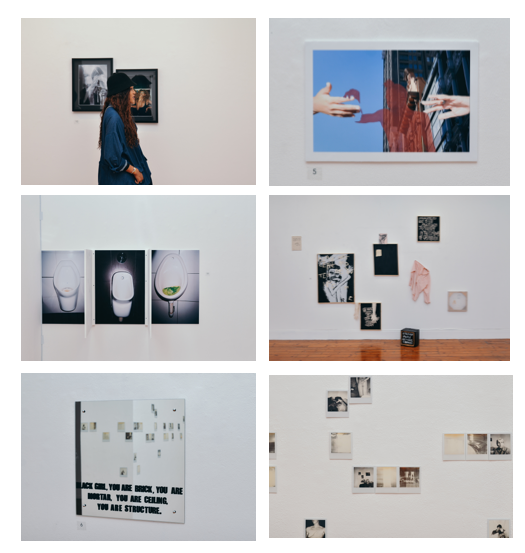
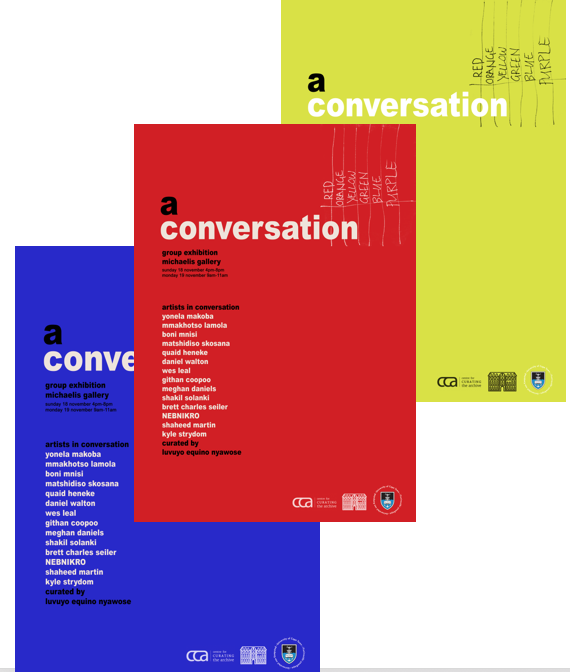
Prrrip-Prrrip, Tseeeep!:
the silence of birds’ eggs
Birds are highly vocal creatures, their songs sound everyday in almost every habitat, even our concrete cities. These calls have been likened to the human capacity for speech, yet the faculty of language has, for most of history, been described as solely ‘human.’ Language forms one of several traits deployed to uphold the constructed divide between human and non-human animals.
Oology – the collecting and documenting of wild bird eggs – was an obscure hobby and ‘science’ of the past. Collected eggs were pierced and ‘blown’ of their contents. The perfect shells, beautifully coloured with speckles and intricate patterns, were then placed in vast cabinet collections. Such a birds’ egg collection, collected in Southern Africa during the last half of the 20th century, forms the starting point of this exhibition.
Through exploring language and communication in birds, this exhibition aims to create an affective environment for re-evaluating the collecting practices of the past (with its ties to the Euro-Western, human-centered perspective), and for re-imagining current natural history collections. It also aims to poo-too-eee poo-too-eee! pa-chip-chip-chip, per-chick-a-ree; ka-ha, ka-ha-kuh-uk! caw-caw-caw-caw-koodle-yah, koodle-yah, looo-eee! pa-chip-chip-chip, per-chick-a-ree!
Curated by Melissa Waters
Below images by the curator:
